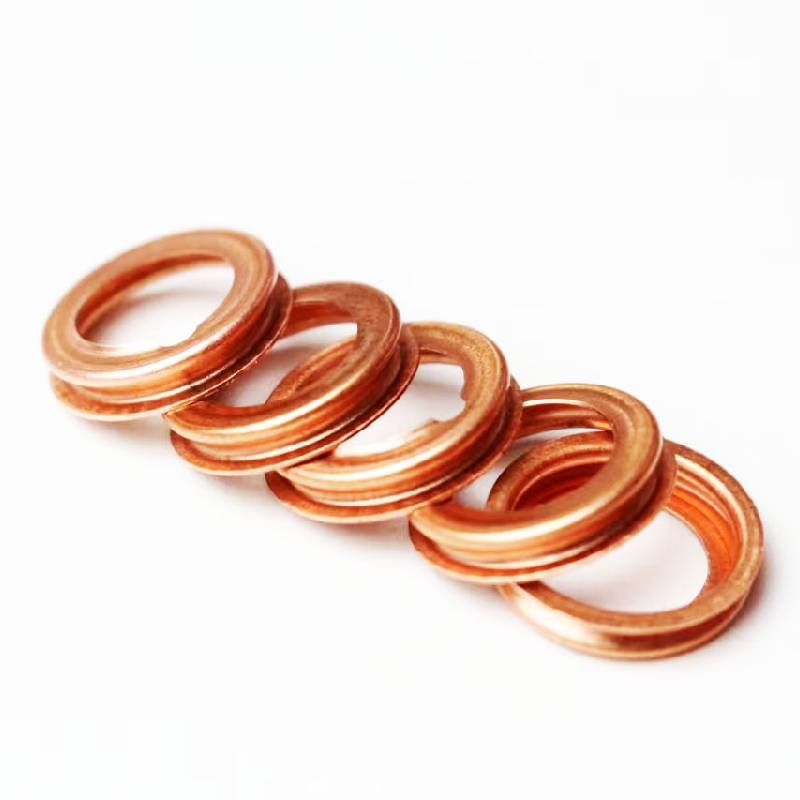Choosing the Right O-Ring for Your Car AC Compressor Replacement Needs
Understanding the Role of O-Rings in Car AC Compressors
The functionality of a car's air conditioning (AC) system is crucial for maintaining comfort during hot weather. One essential component within this system is the AC compressor, which is responsible for compressing refrigerant and circulating it throughout the AC system. An integral yet often overlooked part of this system is the O-ring, a small but vital component that ensures the efficient operation of the compressor. In this article, we will delve into the importance of O-rings in car AC compressors, their functions, and best practices for maintenance and replacement.
What is an O-Ring?
An O-ring is a circular, rubber-like seal that is designed to prevent the escape of refrigerant and other fluids within the AC system. These rings are typically made of durable materials like nitrile, silicone, or fluorocarbon, which can withstand high pressures and temperatures. The design of the O-ring allows it to create a tight seal when placed in a groove between two connecting parts, preventing leaks that could compromise the AC system’s effectiveness.
The Role of O-Rings in AC Compressors
In the context of car AC compressors, O-rings play a critical role in ensuring that the refrigerant is contained within the system. The compressor operates under high pressure, and any leaks can lead to a drop in efficiency, resulting in reduced cooling performance or complete failure of the AC system. O-rings help maintain system integrity by sealing joints between various components, including the compressor housing, hoses, and fittings.
Common Issues with O-Rings
Like any rubber component, O-rings can degrade over time due to environmental factors such as heat, moisture, and exposure to chemicals. Common issues associated with O-ring failure include
2. Swelling Conversely, when exposed to certain refrigerants or oils, O-rings may swell, which can also prevent them from seating properly and cause leaks.
car ac compressor o ring

3. Improper Installation If an O-ring is not installed correctly or is the wrong size, it can lead to immediate failure, resulting in fluid leaks.
Signs of O-Ring Failure
Recognizing the signs of O-ring failure can prevent more significant problems within your vehicle’s AC system. Some common symptoms include
- Reduced Cooling Performance If your AC isn’t blowing cold air as it should, leaks in the system could be the culprit. - Hissing or Whistling Noises These sounds may indicate refrigerant is escaping through faulty seals. - Visible Leaks Puddles or wet spots under your car can signal that your AC system is leaking refrigerant.
Maintenance and Replacement
Regular maintenance can extend the life of your AC system, including its O-rings. Here are some tips
- Routine Inspections Have your AC system checked by a professional regularly, especially before summer. Technicians can spot potential issues with O-rings and other components before they become serious problems. - Use Quality Parts When replacing O-rings, always opt for high-quality components that match the specifications for your vehicle’s model. - Proper Installation Ensuring that O-rings are installed properly will prevent premature failure and leaks.
Conclusion
While small in size, O-rings are crucial for the efficiency and reliability of car AC compressors. Understanding their role, recognizing the signs of failure, and practicing proper maintenance can help keep your car's air conditioning system running smoothly. By being proactive about AC system care, you can enjoy a comfortable ride, even on the hottest of days. The next time you think about your car’s AC system, remember that those little O-rings are doing big work behind the scenes!
-
Understanding Cassette Seals: A Durable Solution for Oil and Dirt Protection
News Apr.30,2025
-
Understanding and Maintaining the Polaris Ranger Front Differential
News Apr.30,2025
-
Understanding and Maintaining the Polaris Front Differential
News Apr.30,2025
-
Understanding and Maintaining the Crank Oil Seal for Engine Efficiency
News Apr.30,2025
-
Heavy Duty Seals: Durable Solutions for Home, Industrial, And Commercial Use
News Apr.30,2025
-
Auto Oil Seals: Protecting Your Engine from Leaks and Contamination
News Apr.30,2025
-
Essential Tools and Kits Every Car Owner Should Have
News Apr.29,2025
Products categories















